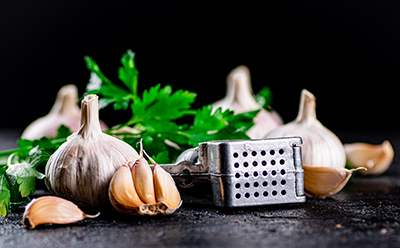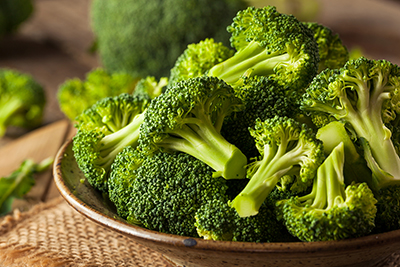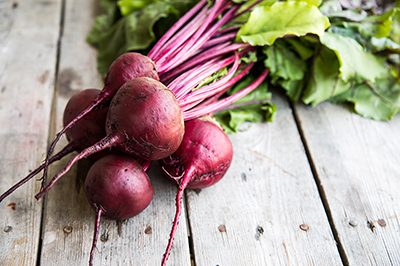Eating with the Seasons
Summer is here! Along with longer days and warmer temperatures, Canadians can also enjoy a plethora of local fresh fruits and vegetables this season. In addition to being more flavourful, local in-season produce is more environmentally friendly and nutritious in comparison to its international counterparts. Reduced transit time produces a smaller ecological footprint and faster farm-to-table minimizes the loss of vitamins and minerals.[i], [ii] Eating locally is a sustainable practice that is not only good for us, but often, for our wallets too. Read on to learn about some of the produce currently in season in Canada and the health benefits of these plants.
Berries
Field berries are harvested across much of southern Canada beginning in June/July until September/October, depending on weather conditions. Strawberries are the first to arrive, followed by blackberries, raspberries, and blueberries ripening towards the end of the season.[iii], [iv], [v] Nutritionally, berries are a rich source of antioxidants, including anthocyanins. This compound not only produces the blue, red, and purple hues of berries, but also possesses potent inflammation- and cell-damage–fighting activity, in addition to anticancer and antiplatelet effects.[vi] Berries are a key component of the MIND diet designed for neurological health, as anthocyanins can cross the blood-brain barrier [vii] and can help preserve cognitive health among the elderly.[viii] Berries also have a low glycemic load, meaning they do not spike blood sugar. This makes berries a great fruit option to help manage blood sugar.
 Garlic
Garlic
Garlic is typically planted in the fall and harvested the following summer. The medicinal effects of garlic have long been recognized by various cultures. Garlic’s health benefits largely come from allicin, a compound known for its cardiovascular and immune-related effects.[ix] Research shows that garlic consumption prevents atherosclerosis, reduces cholesterol and blood pressure, and inhibits platelet aggregation.[x] Garlic also exhibits antitumour, hypoglycemic, and antimicrobial effects.[xi] To enjoy the health benefits of allicin, garlic should be crushed or minced and added to food when it is nearly done being prepared.
Tomatoes
Greenhouse tomatoes are available year-round, but vine-ripened tomatoes are significantly more nutritious and have much more flavour. Tomatoes are incredibly rich in vitamin C. This is especially true for vine-ripened tomatoes, which have twice as much vitamin C in comparison to hothouse tomatoes.[xii] Tomatoes, when cooked in oil, are also a rich source of lycopene. Lycopene has anticancer effects, which both reduces the risk and progression of prostate cancer.[xiii]
 Broccoli
Broccoli
Broccoli is a cruciferous vegetable harvested beginning in June or July, depending on the province. Belonging to the same vegetable family as cabbage and Brussels sprouts, broccoli is a rich source of vitamins A, C, and K, as well as of the minerals calcium, potassium, and iron.[xiv] Broccoli is also high in soluble fibre, meaning it absorbs water and forms a gel within the digestive tract, which helps to regulate bowel movements. As a cruciferous vegetable family member, broccoli contains the bioactive compounds sulforaphane and indole-3‑carbinol. These compounds exert anticancer, anti-inflammatory, and antioxidant effects. Indole-3‑carbinol also plays a role in estrogen metabolism [xv] and can be used therapeutically for some hormonal disorders.
 Beets
Beets
This earthy tasting root vegetable is harvested in the late summer across Canada. Beetroot contains various vitamins and minerals, including B vitamins, vitamin C, magnesium, phosphorus, calcium, potassium, and zinc.[xvi]
Beets also have potential therapeutic value in the management of various chronic diseases, including liver and cardiovascular conditions. As a source of betaine in addition to many antioxidants, beets have a hepatoprotective, or liver-protective, effect.[xvii] Research suggests beetroot juice, in addition to a Mediterranean diet, may have promising effects in reducing fibrosis seen in fatty liver disease.[xviii] Beets are also a source of nitrates, not to be confused with nitrites.[xix] Unlike nitrites, which are harmful to heart and blood-vessel health, nitrates are beneficial. As a precursor to nitric oxide, nitrates play a role in preventing hypertension and atherosclerosis.[xx]
Summary
These are only a small selection of some of the delicious local produce that become available over the summer in Canada. Although nutrient-dense, not all foods are suitable for everyone—talk to your naturopathic doctor to determine what foods are best for you and your health. Whenever possible, support the local economy, the environment, and your health by choosing local in-season produce this summer.
 Dr. Jill Northrup, ND
Dr. Jill Northrup, ND
A Toronto-based naturopathic doctor with a passion for health and natural medicines, she values an evidence-based treatment approach and emphasizes patient education and preventative medicine in her practice.
aspire-health.ca
References
[i] Galli, F., and G. Brunori. (2013). Short food supply chains as drivers of sustainable development. Evidence document. Document developed in the framework of the FP7 project FOODLINKS (GA No. 265287). Laboratorio di studi rurali Sismondi, ISBN 978‑88‑90896‑01‑9.
[ii] Zare, K.B., M. Shinde, A. Khandagale, and S. Patil. “Maximizing the nutritional value of fruits and vegetables.” International Journal of Engineering Research in Mechanical and Civil Engineering, Vol. 4, No. 4 (2017): 19–23. (Erroneously identified in the PDF as Vol. 2.)
[iii] Foodland Ontario. Availability guide. 2012–2024. https://www.ontario.ca/foodland/page/availability-guide
[iv] Aliments du Québec. Harvest guide. 2024. https://www.alimentsduquebec.com/en/blog/good-to-know/harvest-guide-in-season-fruits-and-vegetables-are-yours-to-enjoy
[v] BuyBC. Guide to B.C.’s local, seasonal foods. https://buybc.gov.bc.ca/app/uploads/sites/386/2020/10/Seasonal-Chart.pdf
[vi] Olas, B. “Berry phenolic antioxidants – Implications for human health?” Frontiers in Pharmacology, Vol. 9 (2018): 78.
[vii] Andres‑Lacueva, C., B. Shukitt‑Hale, R.L. Galli, O. Jauregui, R.M. Lamuela‑Raventos, and J.A. Joseph. “Anthocyanins in aged blueberry-fed rats are found centrally and may enhance memory.” Nutritional Neuroscience, Vol. 8, No. 2 (2005): 111–120.
[viii] Feng, R.C., Y.H. Dong, X.L. Hong, Y. Su, and X.V. Wu. “Effects of anthocyanin-rich supplementation on cognition of the cognitively healthy middle-aged and older adults: A systematic review and meta-analysis of randomized controlled trials.” Nutrition Reviews, Vol. 81, No. 3 (2023): 287–303.
[ix] Bayan, L., P.H. Koulivand, and A. Gorji. “Garlic: A review of potential therapeutic effects.” Avicenna Journal of Phytomedicine, Vol. 4, No. 1 (2014): 1–14.
[x] Chan, J.Y.Y., A.C.Y. Yuen, R.Y.K. Chan, and S.W. Chan. “A review of the cardiovascular benefits and antioxidant properties of allicin.” Phytotherapy Research, Vol. 27, No. 5 (2013): 637–646.
[xi] Batan, Koulivand, and Gorji, op. cit.
[xii] Bowden, J. The 150 healthiest foods on Earth: The surprising, unbiased truth about what you should eat and why. Gloucester: Fair Winds Press, 2007, 358 p., ISBN 978‑1‑59233‑228‑1.
[xiii] ibid.
[xiv] Syed, R.U., S.S. Moni, M.K.B. Break, W.M. Khojali, M. Jafar, M.D. Alshammari, K. Abdelsalam, et al. “Broccoli: A multi-faceted vegetable for health: An in-depth review of its nutritional attributes, antimicrobial abilities, and anti-inflammatory properties.” Antibiotics, Vol. 12, No. 7 (2023): 1157.
[xv] ibid.
[xvi] Fateh, H.L., S.A. Rashid, S.S. Muhammad, S.H. Al‑Jaf, and A.M. Ali. “Comparing effects of beetroot juice and Mediterranean diet on liver enzymes and sonographic appearance in patients with non-alcoholic fatty liver disease: A randomized control trials [sic].” Frontiers in Nutrition, Vol. 10 (2023): 1181706.
[xvii] ibid.
[xviii] ibid.
[xix] Clifford, T., G. Howatson, D.J. West, and E.J. Stevenson. “The potential benefits of red beetroot supplementation in health and disease.” Nutrients, Vol. 7, No. 4 (2015): 2801–2822.
[xx] ibid.

 Stores
Stores